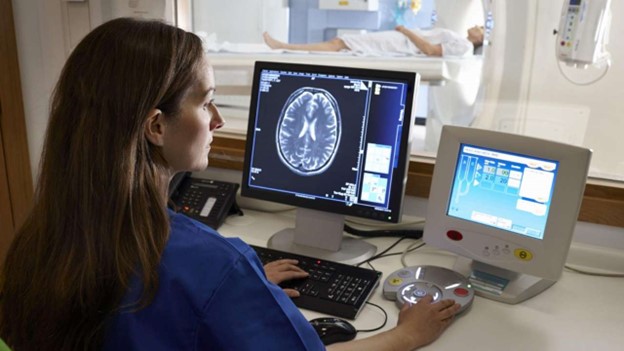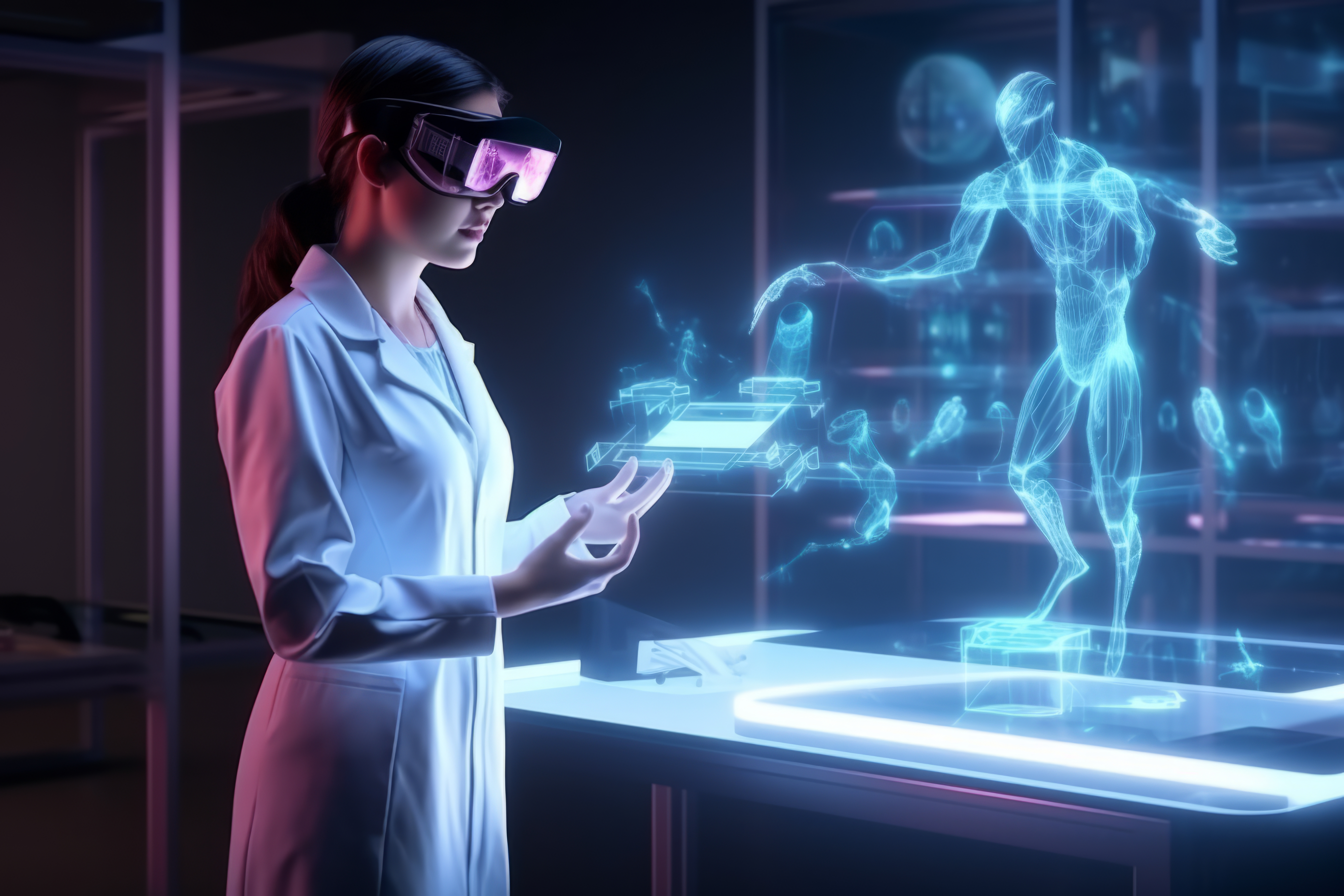
3. Deo Vision - Dicom Viewer
Deo Vision VR Viewer is a cutting-edge medical application that allows healthcare professionals to view, interact with, and analyze DICOM (Digital Imaging and Communications in Medicine) files in a fully immersive Virtual Reality environment. DICOM files are the standard format for storing medical imaging data, such as MRI, CT scans, ultrasound, and X-rays, and are crucial for diagnosis, surgical planning, and treatment.
Here’s a detailed explanation of what VR Anatomy Software entails:
1. Immersive 3D Visualization
The primary feature of a DEO Vision is its ability to transform traditional 2D medical images into fully immersive 3D models. Instead of viewing flat images on a screen, doctors can step into a virtual environment where they can interact with the medical images as though they were physical objects. This allows for a much more detailed examination of complex anatomical structures, tumors, blood vessels, and organs.
-
3D Reconstruction: The viewer can reconstruct 2D DICOM data into 3D models, enabling medical professionals to rotate, zoom in, slice, and explore anatomical structures in real time. This capability is particularly useful for understanding the spatial relationships between different parts of the body.

2. Enhanced Diagnostic Capabilities
-
Detailed Exploration: Physicians can explore multiple layers of anatomy and adjust settings such as opacity to focus on specific tissues or structures (e.g., bones, muscles, or organs).
-
Better Diagnostic Insight: The immersive environment allows doctors to view images from any angle, improving diagnostic accuracy and potentially identifying conditions that might be missed in 2D viewing.
By utilizing VR, medical professionals can gain a deeper understanding of the patient’s anatomy, which enhances diagnostic accuracy and treatment planning.
3. Surgical Planning and Simulation
-
Preoperative Planning: Surgeons can use VR to walk through the patient's anatomy before performing surgery, giving them a clearer understanding of what they will encounter in the operating room. For example, they can practice navigating around delicate structures such as nerves and blood vessels.
-
Simulating Procedures: By overlaying DICOM data in VR, surgeons can practice certain surgical approaches or techniques, visualizing potential complications and adjusting their plans accordingly.
A Deo Vision Viewer is highly valuable for surgeons who need to prepare for complex procedures.
4. Collaboration and Remote Viewing
-
Remote Collaboration: Physicians from different locations can share and discuss DICOM data in real time, viewing and manipulating the same 3D images together. This is particularly beneficial in telemedicine, multidisciplinary consultations, or training environments.
VR allows for a collaborative approach to medical imaging. Multiple doctors, surgeons, or medical students can enter the same virtual environment, enabling collaborative diagnosis, treatment planning, or even teaching.
5. Teaching and Education
-
Interactive Learning: Students can explore complex medical images in 3D, improving their understanding of human anatomy and various medical conditions. The immersive aspect helps bridge the gap between textbook learning and real-world clinical experience.
-
Practice Interpretation: Trainees can practice interpreting DICOM images in VR, enhancing their radiological skills and preparing them for real-life clinical scenarios.
For medical students and trainees, the Deo Vision Viewer offers an interactive and immersive way to learn about anatomy, radiology, and pathology.
6. Improved Patient Communication
-
Patient Education: Physicians can use VR to show patients a 3D visualization of their condition, helping them better understand their diagnosis and the proposed treatment plan. This improves patient trust and engagement in their healthcare.
Deo Vision also benefit patient care by making it easier to explain complex medical conditions and treatments to patients.



